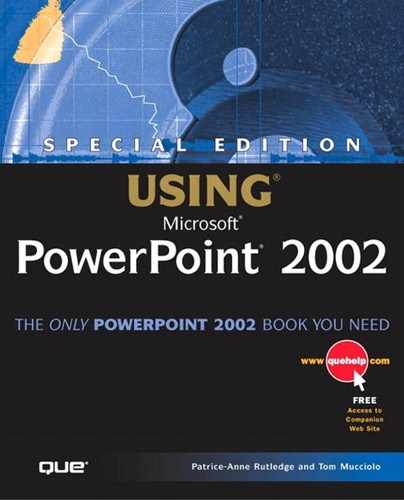Using Speech Recognition
Before you begin using speech recognition, be sure to place your mouse pointer in a location that can accept text, such as a bullet list or other text area on a slide. To improve accuracy, talk in a consistent, even tone. Speaking too slowly or quickly can decrease the level of recognition. Also, don't stop and start. Pauses and gaps make it harder to recognize your speech.
Using Dictation Mode
To dictate text using the speech recognition engine, follow these steps:
Click the Microphone button on the Language bar to turn on the microphone. Alternatively, you can say the word “microphone” to toggle the microphone on and off.
Click the Dictation button on the Language bar (or say “dictation”) to activate speech recognition.
Dictate your text into the microphone.
Of course, getting dictation to work exactly as you want it to is more complicated than 1-2-3, but the basic premise is really quite simple. When you're finished dictating, be sure to turn off the microphone; the speech recognition engine will continue to record your words until you do so.
Note
You can use Dictation mode with the Ask a Question box. Simply place the insertion point in the box and dictate your question.
Problems getting your microphone to recognize your speech? See the “Troubleshooting” section near the end of the chapter.
Dictating Punctuation
During dictation, you'll probably need to add some form of punctuation or a special character to your text. You can do this easily using one of the many dictation commands the speech recognition engine recognizes. For example, if you want to place a period at the end of a bullet point, just say “period.” If you want to include a Web address, the engines will know what you mean when you say “dot.” Table 8.1 lists the most common dictation commands.
Dictating Numbers
If you're going to dictate numbers using Dictation mode, here are a few things to keep in mind. The speech recognition engine
Spells out numbers less than 20
Inserts numbers greater than 20 as digits
Inserts fractions as digits (one-fourth becomes ¼)
Recognizes a series of seven numbers as a telephone number and formats it as such (555-1234)
Enables you to insert all numbers as digits if you say “forcenum” before saying the numbers
Spelling Out Uncommon Words
There are going to be times when the speech recognition engine simply won't be able to recognize what you say. This is particularly common when you say the name of a company, product, or person or use specific industry jargon. In these circumstances, you can quickly spell out the word or words you want to dictate. To do so, say “spelling mode” and then begin spelling letter by letter. Another option is to add these common words to the speech recognition dictionary.
→ To learn how to add words to the dictionary, see “Adding Words to the Speech Recognition Dictionary” later in this chapter.
Correcting Speech Recognition Errors
As you know, Office's speech recognition tools may accurately recognize only 80% to 95% of your speech. To fix errors, you have two choices:
Select the error (either a single word or section of text) and repeat your dictation.
Manually fix the error using the keyboard.
Using Voice Command Mode
Voice command functionality has a variety of uses. You can use voice commands to say the name of
An active toolbar button to perform its command. For example, you could say “save” to save the presentation you're currently working on or “bold” to apply a bold format to selected text. If you're not sure of the name of a toolbar button, pause the mouse over it to display its ScreenTip.
A menu to open it. For example, say “insert” to open the Insert menu. From there, you can say the name of the menu item you want to choose or say “expand” instead of clicking on the double down arrows to view additional menu options.
A dialog box tab to move to that tab.
A dialog box option to select it. For check boxes, saying its name again acts as a toggle to remove the check mark.
A hyperlink in a task pane to activate it.
A punctuation command, such as comma, period, or colon, to enter the symbol for that command.
The individual letters of words that the speech recognition engine would have trouble recognizing (say “spelling mode” before doing this).
Note
To create a new blank presentation from the New Presentation task pane, say “new file.”
→ For more information on spelling mode, see “Spelling Out Uncommon Words” earlier in this chapter.
Issuing Voice Commands
To activate voice commands, first verify that your microphone is on and then click the Voice Command button on the Language bar (or say “voice command”). If you were in Dictation mode, PowerPoint no longer transcribes your words as dictation, but instead understands them as commands. Try out all the suggested ways to use voice commands to determine which ones will help in your own personal productivity. You can control a great deal of PowerPoint's functionality with voice commands, but you'll probably need to experiment for a while to learn how to use this new way of working more effectively.
Exploring Voice Commands
You can also use voice commands to navigate within PowerPoint in addition to control menus, toolbars, and fields in dialog boxes and task panes. Table 8.2 lists some additional voice commands to try.
